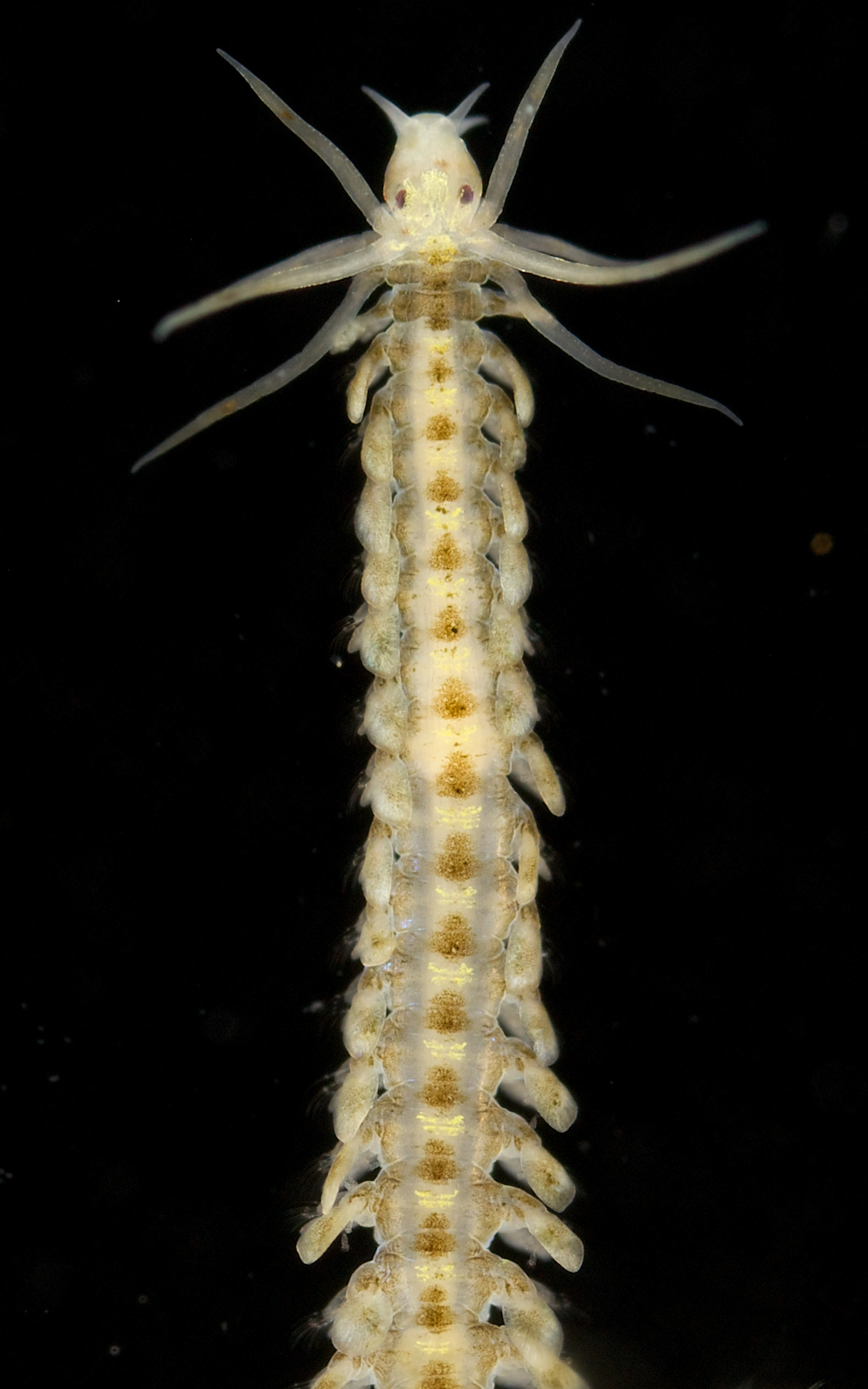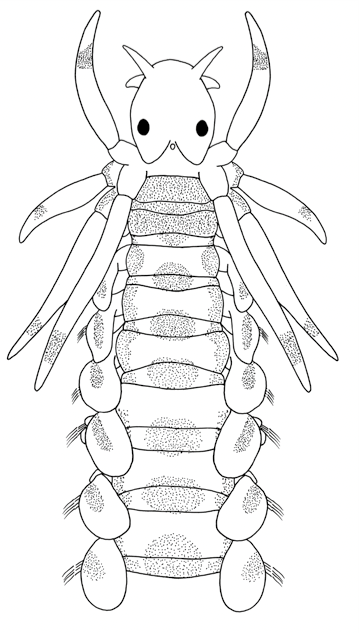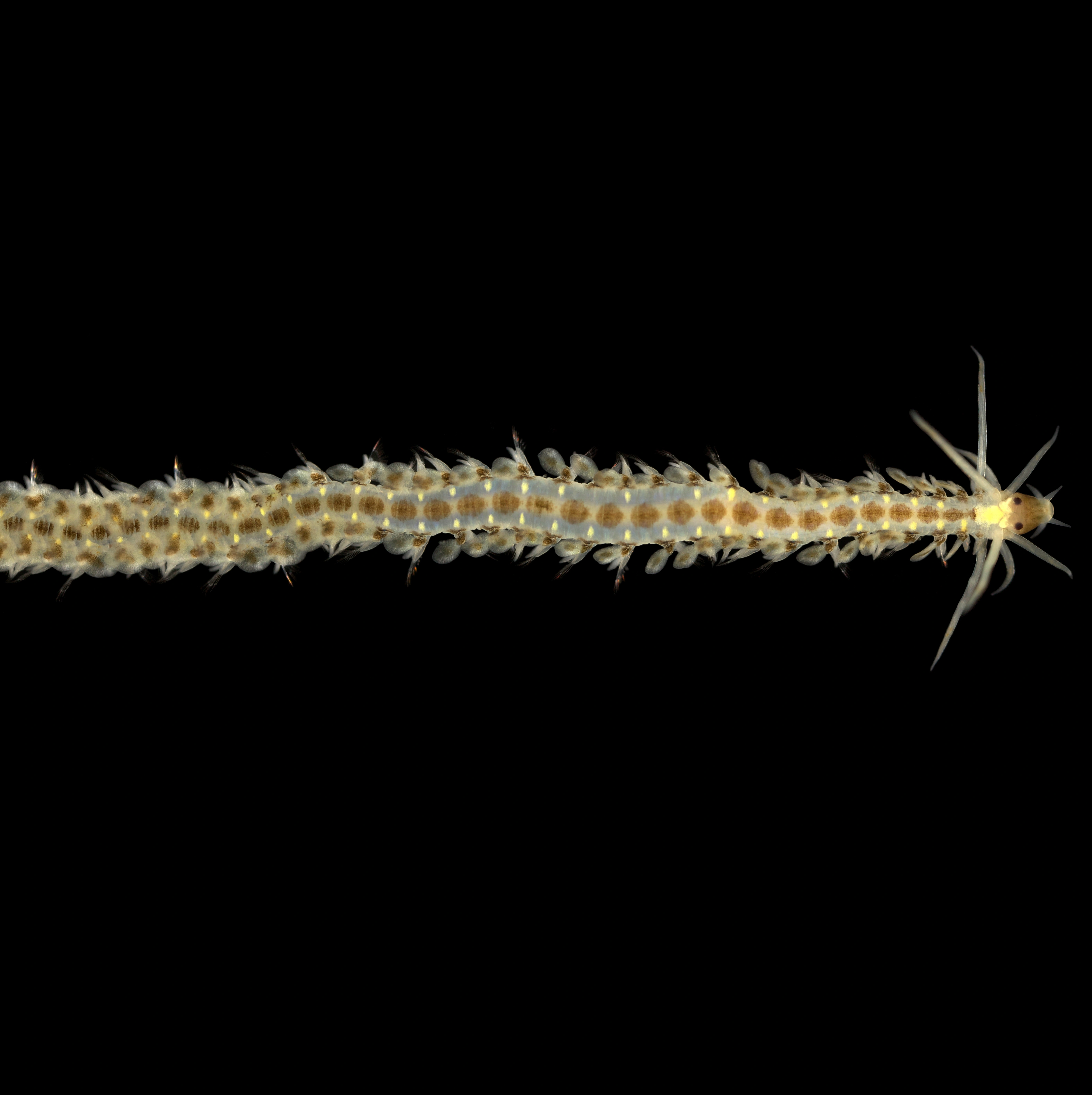Phyllodoce maculata
This is a common bristle worm in Norway. It is typically found in shallow waters in sand, gravel and among brown and red algae. Phyllodoce maculata is easily recognised by the characteristic colour pattern when alive. Animals are whitish with some yellow pigmentation behind the eyes and on the posterior margin of the segments. They also have a large brown spot on each segment and on the median part of all dorsal cirri along the body.
- Innhold
- Measurements
- Characteristics
- Look-alikes
- Biology, ecology and behaviour
- Habitat
- Recommended citation
Measurements
Phyllodoce maculata, redrawing from Pleijel (1993).
Up to 6 cm long with at most 200 segments.
Characteristics
Living specimens are recognised by their colour pattern. It is whitish with yellow pigmentation on the dorsal side of the prostomium and yellow spots in the median dorsal part of each segment. Furthermore, it has brown pigmentation on the dorsal side of segment 3 and 4, on the dorsal side in the space between each segment, and on the median part of all dorsal cirri along the body.
Look-alikes
This species is easily confused with Phyllodoce mucosa which has a similar type of pigmentation. However, P. mucosa has brown pigmentation on the prostomium in front of the eyes, yellow pigmentation on the dorsal side of segment 2 and lack the distinct brown pigmentation on segment 3 and 4 that is typical of P. maculata. Furthermore, it has two small yellow spots on each segment instead of one as in P. maculata.
Biology, ecology and behaviour
Nothing is known about reproduction or feeding strategies. The larvae are planktonic and at least in eastern Canada, these can be found in the water column in June.
Habitat
Phyllodoce maculata lives in shallow waters down to 400 meters depth on hard substrates, among brown and red algae, and in sand and shell gravel.
References
Pleijel F (1993). Polychaeta Phyllodocidae. Marine invertebrates of Scandinavia 8: 1–159.
Recommended citation
Nygren A. Phyllodoce maculata (Linnaeus, 1767). www.artsdatabanken.no/Pages/313088. Downloaded <year-month-day>.


